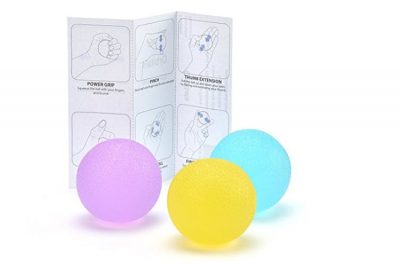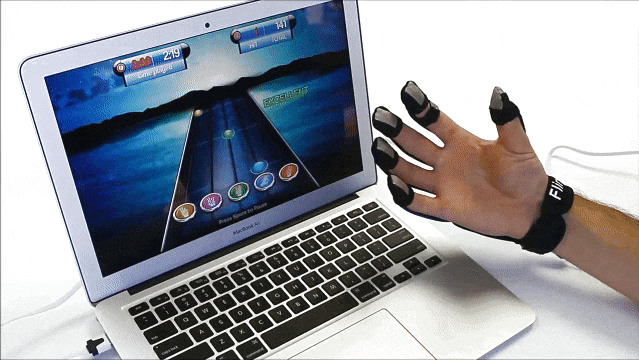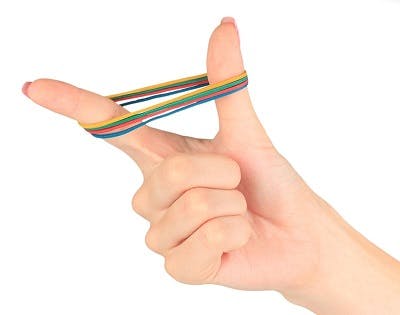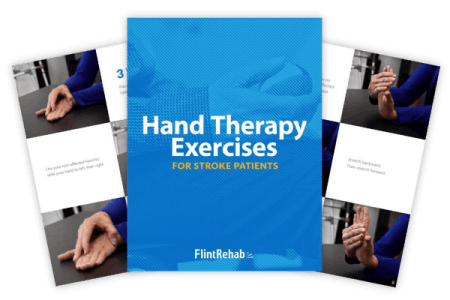Fine Motor Activities for Adults After Stroke: Example Exercises to Try

Hand therapy ball exercises are great for individuals following stroke, especially for those that have hand weakness or struggle with clenched hands. Some exercises involve squeezing or pinching a therapy ball, which would benefit patients who need to strengthen the finger flexors (the muscles that allow you to bend your fingers and make a fist).
However, hand therapy balls can also be useful for patients with spasticity that present with clenched fists. Placing their hand and fingers around the ball can allow them to stretch out the tightened muscles. If spasticity is severe, these patients may need to use their unaffected hand to help place the spastic hand around the ball.
See all hand therapy ball exercises »
2. Therapy putty exercises

Therapy putty is a popular hand rehabilitation tool used in occupational therapy. By manipulating the putty in various ways, you can give your hand a good workout. For example, you can practice finger extension by wrapping the putty around your index finger and then extending your finger up, pushing through the resistance of the putty. As your hand grows stronger, you can increase the resistance of the putty you’re using to continue challenging yourself and improving muscle function.
See all therapy putty exercises »
3. MusicGlove hand therapy

While most hand therapy exercises can be dry and boring, MusicGlove is a high-tech home therapy system that incorporates gaming and music into your hand exercises. It’s clinically proven to improve hand function in just 2 weeks because patients are motivated to achieve higher repetition of finger exercises.
4. Tabletop exercises
Whenever you’re sitting at a table, it’s a great time to do some hand exercises. You can use various household items like coins, paper clips, silverware or pens to practice a variety of fine motor skills. For example, you can practice gripping a pen, sliding it across the table, and releasing it. Additionally, you can work on using your thumb and fingers to spin the pen in a circle on the table in both clockwise and counterclockwise directions. Practicing tracing and writing can also be effective for improving fine motor coordination skills.
5. Moving beans
If you have any dried beans in your pantry, pour some onto a table and practice moving them into a cup, one by one. While this might be mundane, it’s a commonly-practiced occupational therapy exercise for fine motor skills. Once you become skilled at picking up one bean at a time, try using smaller beans, or attempt picking up multiple beans in your hand at once, then manipulating them to your fingertips one at a time to place into the cup.
6. Stacking coins

Have any spare change lying around? Try flipping the coins all one direction (either heads or tails side up) and stacking the coins on top of each other as a simple and affordable fine motor activity. This activity helps develop grasp and release functions, as well as careful placement. Sorting coins is also great for developing fine motor skills, as well as addressing cognitive functions. Furthermore, to work on building strength, try adding coins to therapy putty and attempt to remove them.
7. Rubber band resistance


Do you have this 25 page PDF of beautifully illustrated hand therapy exercises? You don’t want to miss this!
The best way to improve hand mobility after a stroke is to practice hand therapy exercises. Sign up below to get your copy of this free ebook.
You’ll also receive our weekly Monday newsletter that contains 5 articles on stroke recovery, and you can unsubscribe at any time.
